This week’s conservation curiosity are sculptural antique busts. This classical form of portraiture has allowed famous faces from Julius Caesar to Queen Victoria to be recorded in three-dimensional splendour.
 Above: a selection of antique busts including a terracotta Bacchante by Rodin, an early 16th century Julius Caesar, a marble bust by Augustin Pajou, Denis Diderot by Jean Antoine Houdon, and ‘Venezia’ by Larkin Goldsmith Mead
Above: a selection of antique busts including a terracotta Bacchante by Rodin, an early 16th century Julius Caesar, a marble bust by Augustin Pajou, Denis Diderot by Jean Antoine Houdon, and ‘Venezia’ by Larkin Goldsmith Mead
Antique busts are figurative sculptures of a head, neck and shoulders. As a cheaper and easily transportable alternative to a full sculpture, they were popular with royalty, aristocrats and later the upper middle class. Today they still make for a charming ornament to remember a favourite historic figure. This insight will explore the history of antique busts as an artform, as well as the ways their sensitive martials can be successfully and safely restored by our conservators.
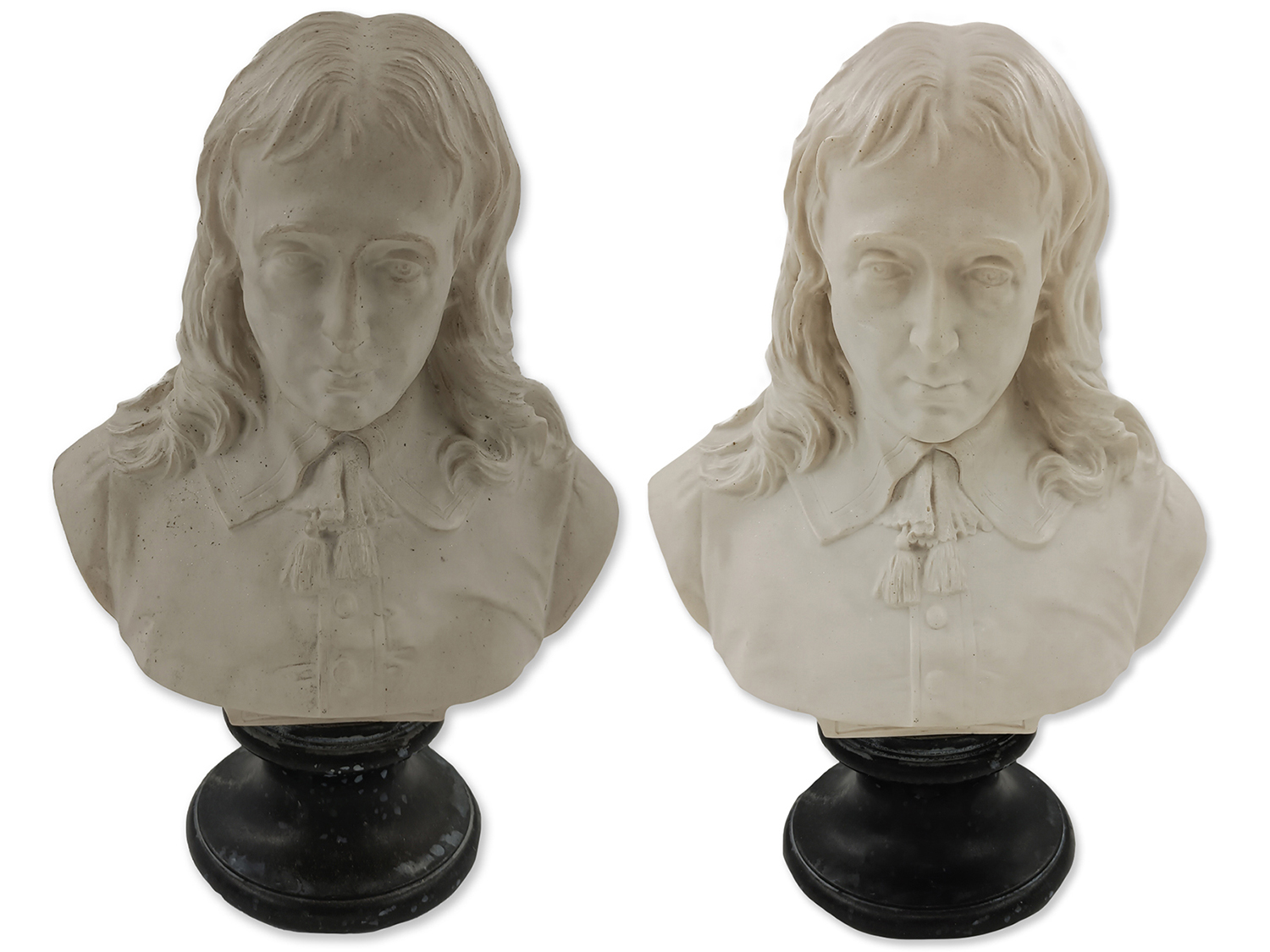
Imperial connotations
The oldest busts are from ancient Egypt and Hellenistic Greece. However many of the surviving artefacts are from Rome, where the higher ranking patrician families would display busts of their family members in the atrium of their homes. Roman sculptors also recreated busts based on Greek designs that have since been lost, famously including Pericles with the Corinthian Helmet, taken from the lifesize statue that once stood at the entrance of the Athenian Acropolis.
 Above: a selection of famous faces in bust form from ancient Rome to the 19th century
Above: a selection of famous faces in bust form from ancient Rome to the 19th century
As they have their origin in ancient Greece and Rome, they carry a strong connotation of an idealised era and classical imperialism. Many of the images we have today of Roman emperors and philosophers are busts, giving this form of portraiture a powerful stately or intellectual presence.
Busts are sometimes copies taken from full size sculptures, sized down to become more easily reproduced and displayed. This is important if the figure has cultural significance, allowing numerous copies to be displayed indoors in a wider variety of public and private interiors.
Bust materials
The most typical material for bust sculptures is marble, but they can also be found in wood and terracotta. Minerals such as limestone and alabaster may also be used, as well as bronze and gilt metals. Reliquary busts may be inlaid with precious stones and house the body parts of various saints. Wooden busts may be covered with plaster with a painted surface.
 Above: busts in different materials including marble, gilt painted wood, onyx-marble, bronze and terracotta
Above: busts in different materials including marble, gilt painted wood, onyx-marble, bronze and terracotta
Bust care and display
Although busts are usually kept indoors and therefore avoid the dangers facing open air sculptures, they can still suffer from poor environmental conditions. Busts near a door or window may be affected by a constant and rapid change in temperature, as well as an influx of external pollution. Busts placed near radiators, or areas with warm air continuously passing through, may also be in a dangerous position for cracks, warping and decay. Displaying your bust in a clean and stable environment is highly recommended.
Frequent touching of busts is a common problem in public spaces. Often, the external features, such as the nose become smoothed down, losing detail due to the oils from skin contact. If you notice this occurring, consider placing the bust further away from the reach of curious hands or placing a polite sign nearby advising visitors not to touch.
 Above: Rossini by Albert-Ernest Carrier-Belleuse (1865), Eva Rohr by Augustus Saint-Gaudens (1872), a third century Roman woman, and Geneviève-Françoise Randon de Malboissière by Lemoyne the Younger (1768)
Above: Rossini by Albert-Ernest Carrier-Belleuse (1865), Eva Rohr by Augustus Saint-Gaudens (1872), a third century Roman woman, and Geneviève-Françoise Randon de Malboissière by Lemoyne the Younger (1768)
Marble sculptures should not be cleaned regularly, only a very light dusting is recommended. Constant cleaning may abrade the surface, distorting the fine details of the face and drapery. Avoid the use of any cleaning products, as acidic or alkali liquids may cause irreparable harm. If your bust has been caught in a disaster such as a fire or flood, professional cleaning is required. This should only be carried out by one of our trained conservators.
If a bust becomes stained, do not try to remove it with household cleaning products. Rubbing the area may cause the stain to become worse. Leave the stain to dry and get in touch with our team, our conservators will use specialist techniques to draw the stain out of the material.
 Above: details from ‘America’ by Hiram Powers (1850) and a portrait of Queen Elizabeth I by John Bacon the Elder (1780)
Above: details from ‘America’ by Hiram Powers (1850) and a portrait of Queen Elizabeth I by John Bacon the Elder (1780)
If you have a heavy bust positioned upon a plinth, ensure it is stable and unlikely to topple over. Wooden plinths may deteriorate over time, leading to accidental damage and severe breakages. If you are unsure about the condition of the plinth or need a new version to be created, speak to one of our helpful team for advice and guidance.
Antique busts restoration
Our ceramics conservator is experienced with a variety of decorative materials. This allows us to offer help to many antiques, from marble to precious metals.
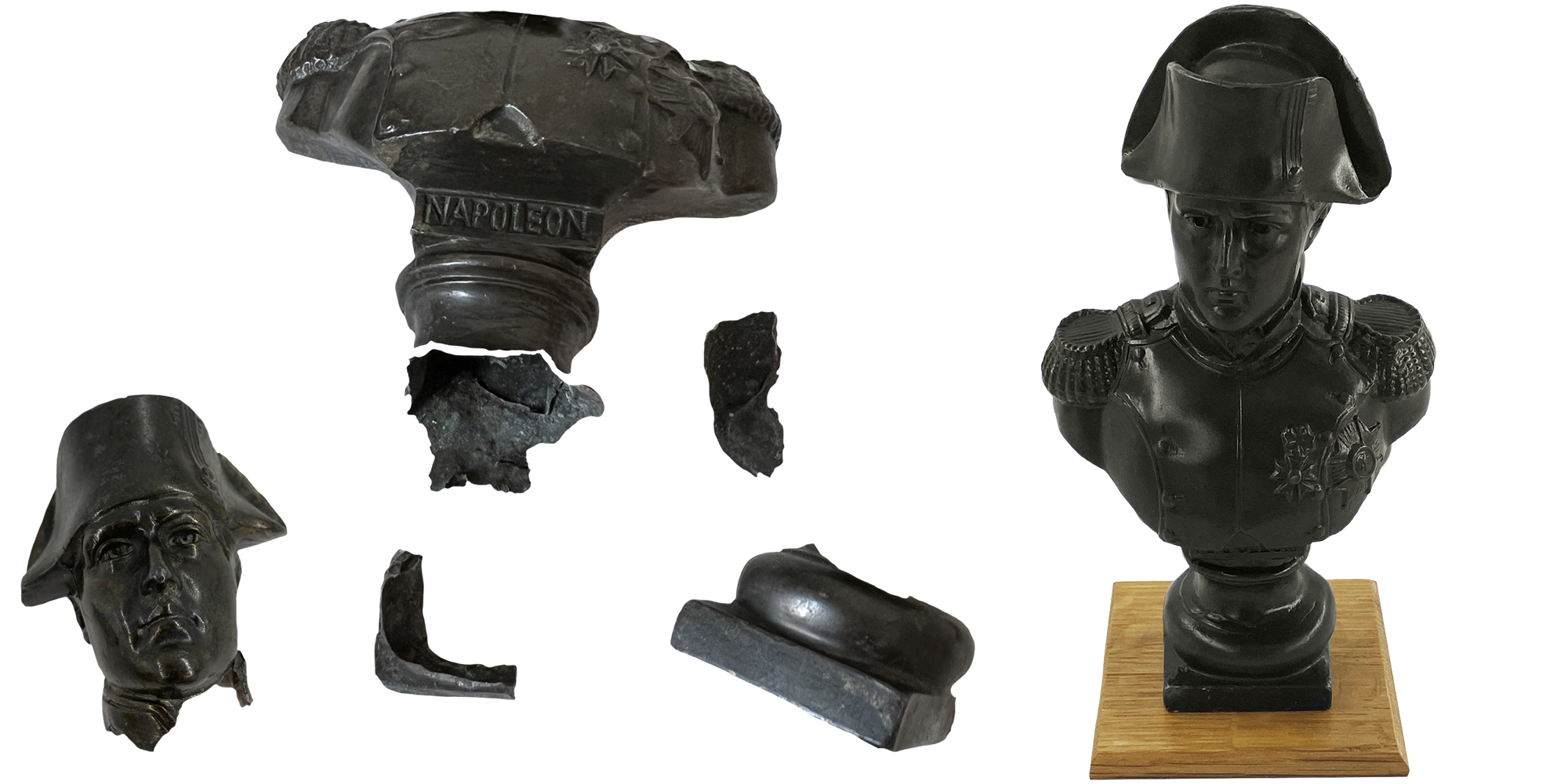
They also have experience in all eras of artwork, sensitively restoring busts from the classical period through to modern day. Below are examples from our studio. All restoration work is conducted with the historic and artistic integrity of the sculpture in mind, allowing for a conservation-appropriate result.
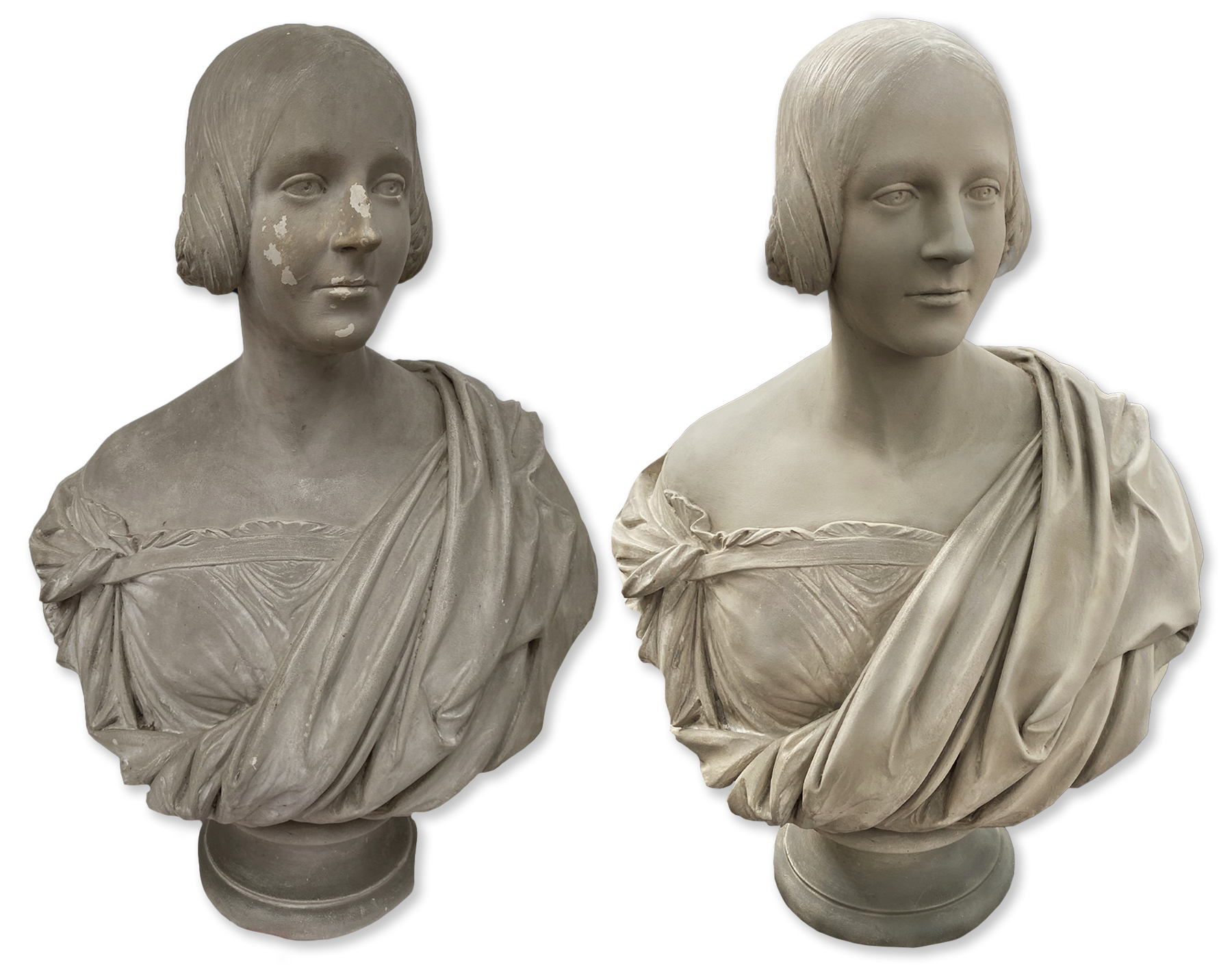
To learn more, please read our articles about the restoration of various materials including bronze, terracotta, alabaster, church sculptures and precious metals.
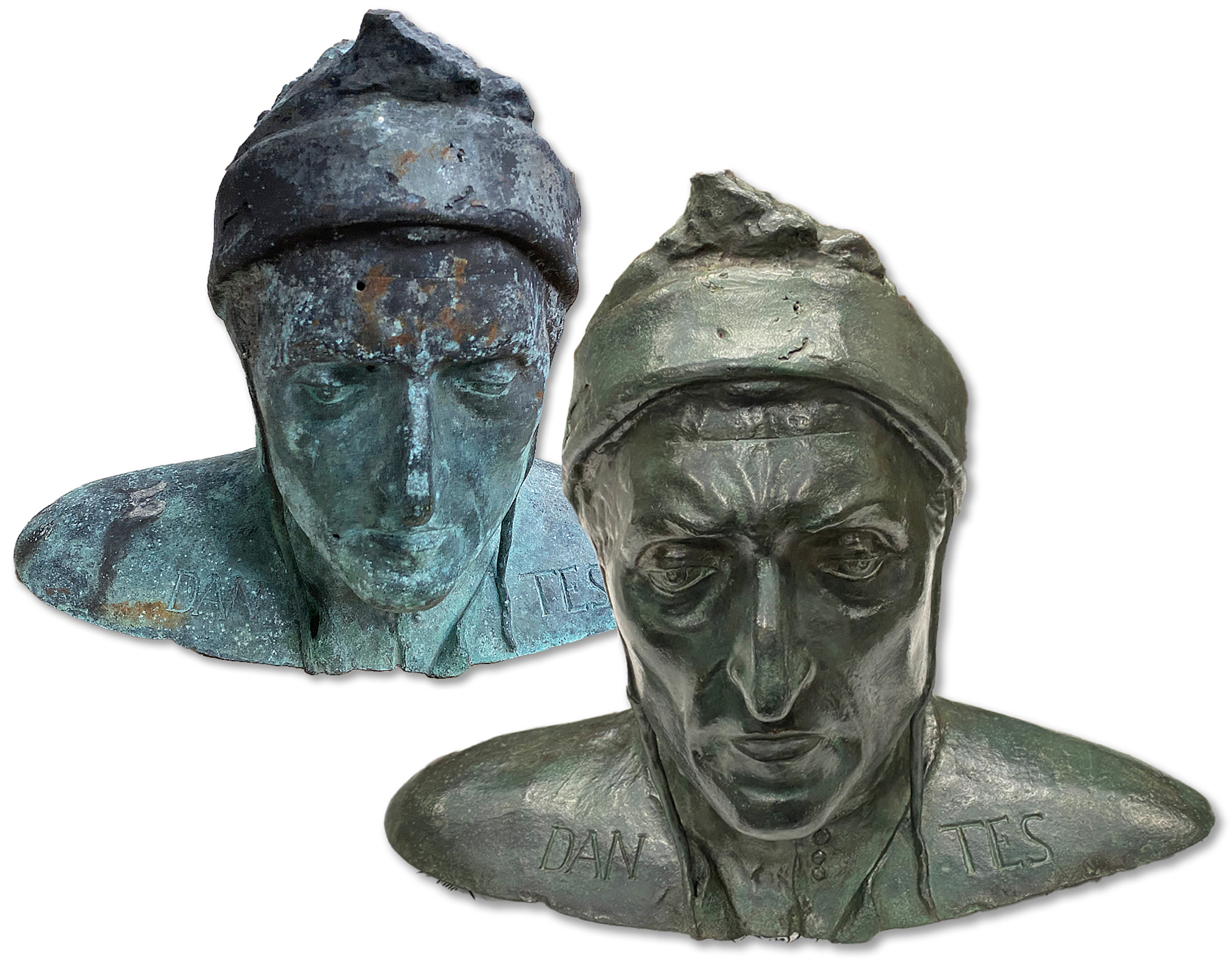
How can we help?
If you have antique busts in need of repair or cleaning, please speak to our team today for further advice and an obligation-free quote. Email us via [email protected] or call 0207 112 7576

 Above: a selection of antique busts including a terracotta Bacchante by Rodin, an early 16th century Julius Caesar, a marble bust by Augustin Pajou, Denis Diderot by Jean Antoine Houdon, and ‘Venezia’ by Larkin Goldsmith Mead
Above: a selection of antique busts including a terracotta Bacchante by Rodin, an early 16th century Julius Caesar, a marble bust by Augustin Pajou, Denis Diderot by Jean Antoine Houdon, and ‘Venezia’ by Larkin Goldsmith Mead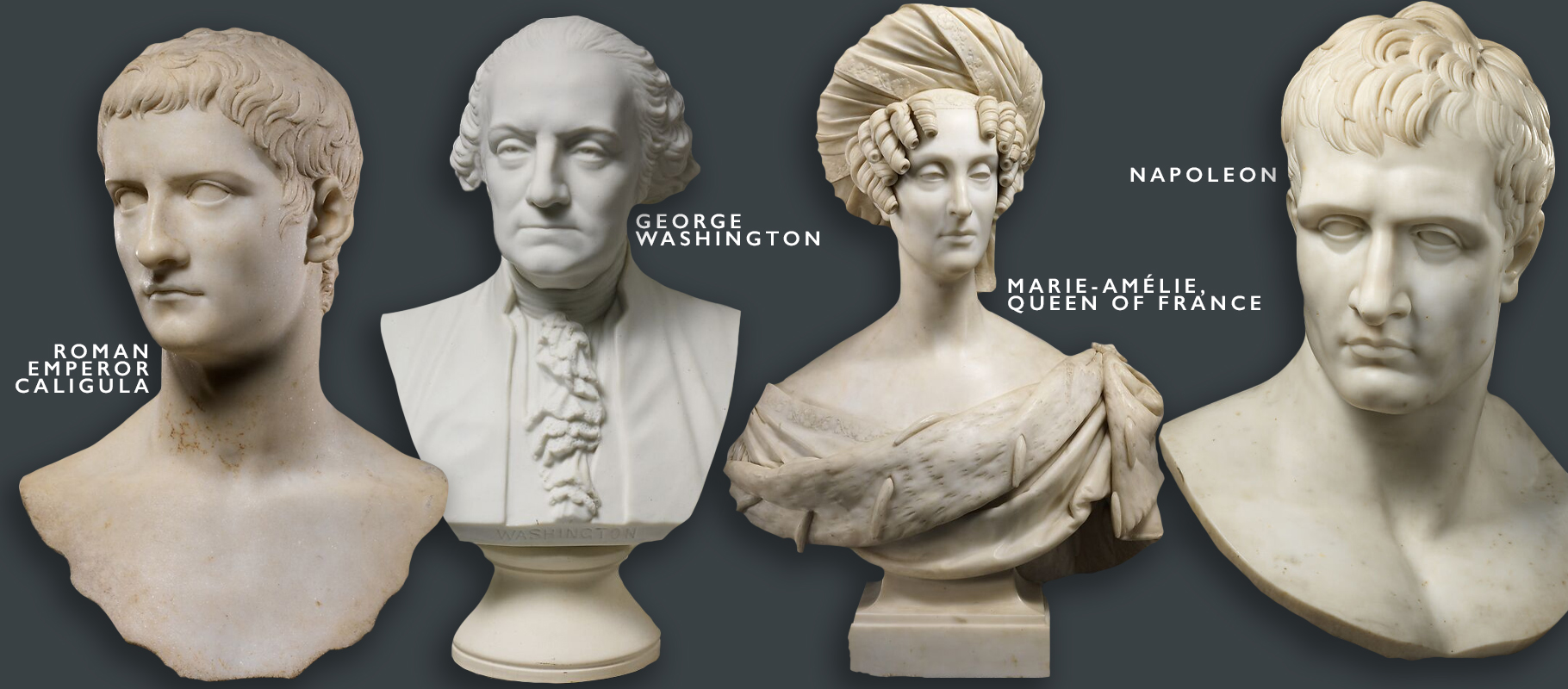 Above: a selection of famous faces in bust form from ancient Rome to the 19th century
Above: a selection of famous faces in bust form from ancient Rome to the 19th century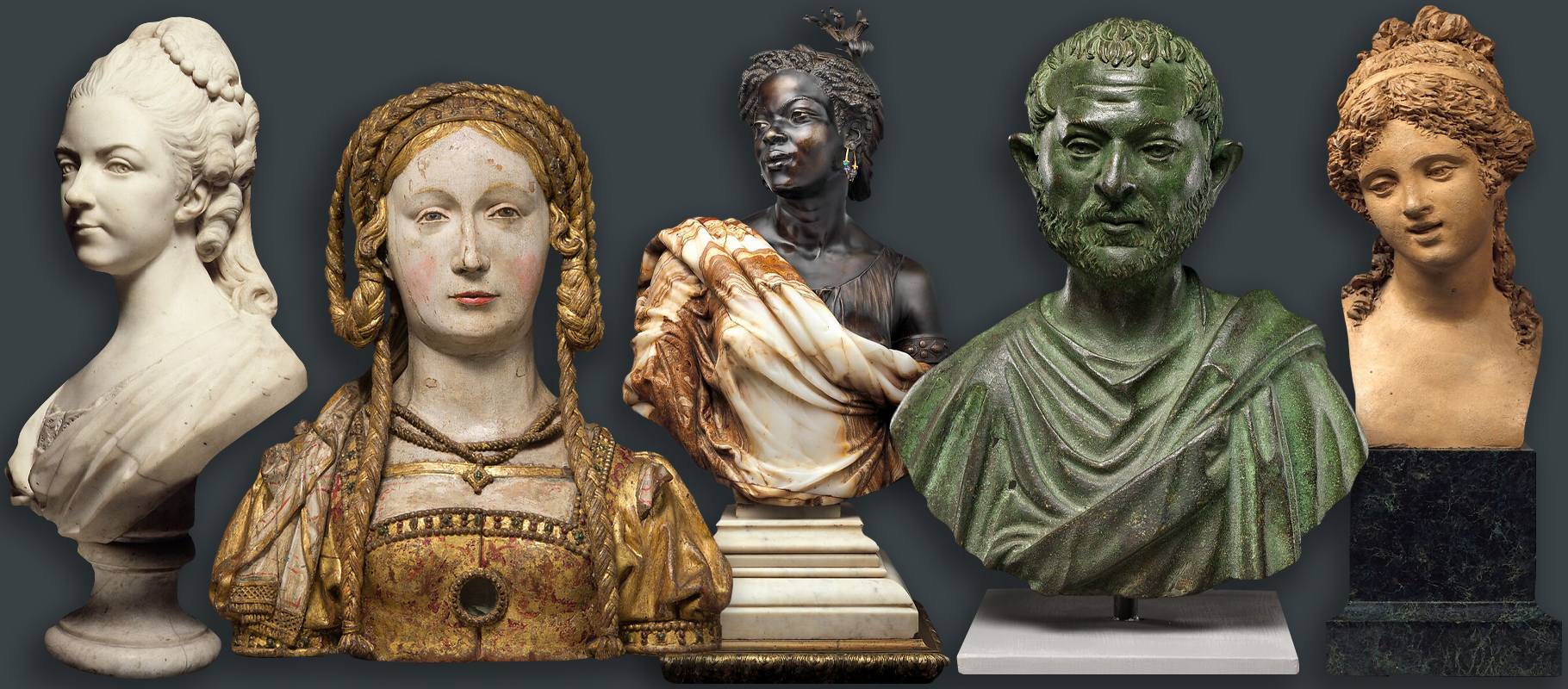 Above: busts in different materials including marble, gilt painted wood, onyx-marble, bronze and terracotta
Above: busts in different materials including marble, gilt painted wood, onyx-marble, bronze and terracotta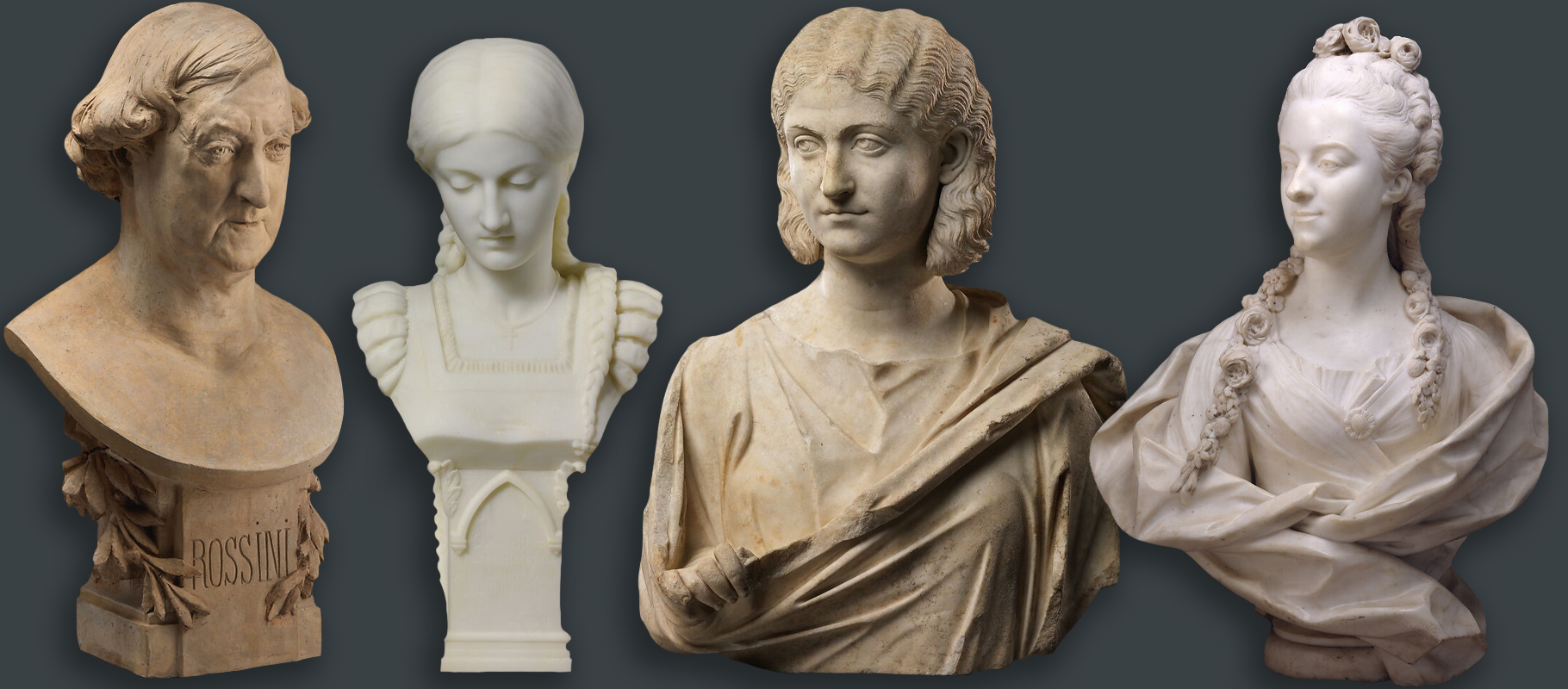 Above: Rossini by Albert-Ernest Carrier-Belleuse (1865), Eva Rohr by Augustus Saint-Gaudens (1872), a third century Roman woman, and Geneviève-Françoise Randon de Malboissière by Lemoyne the Younger (1768)
Above: Rossini by Albert-Ernest Carrier-Belleuse (1865), Eva Rohr by Augustus Saint-Gaudens (1872), a third century Roman woman, and Geneviève-Françoise Randon de Malboissière by Lemoyne the Younger (1768)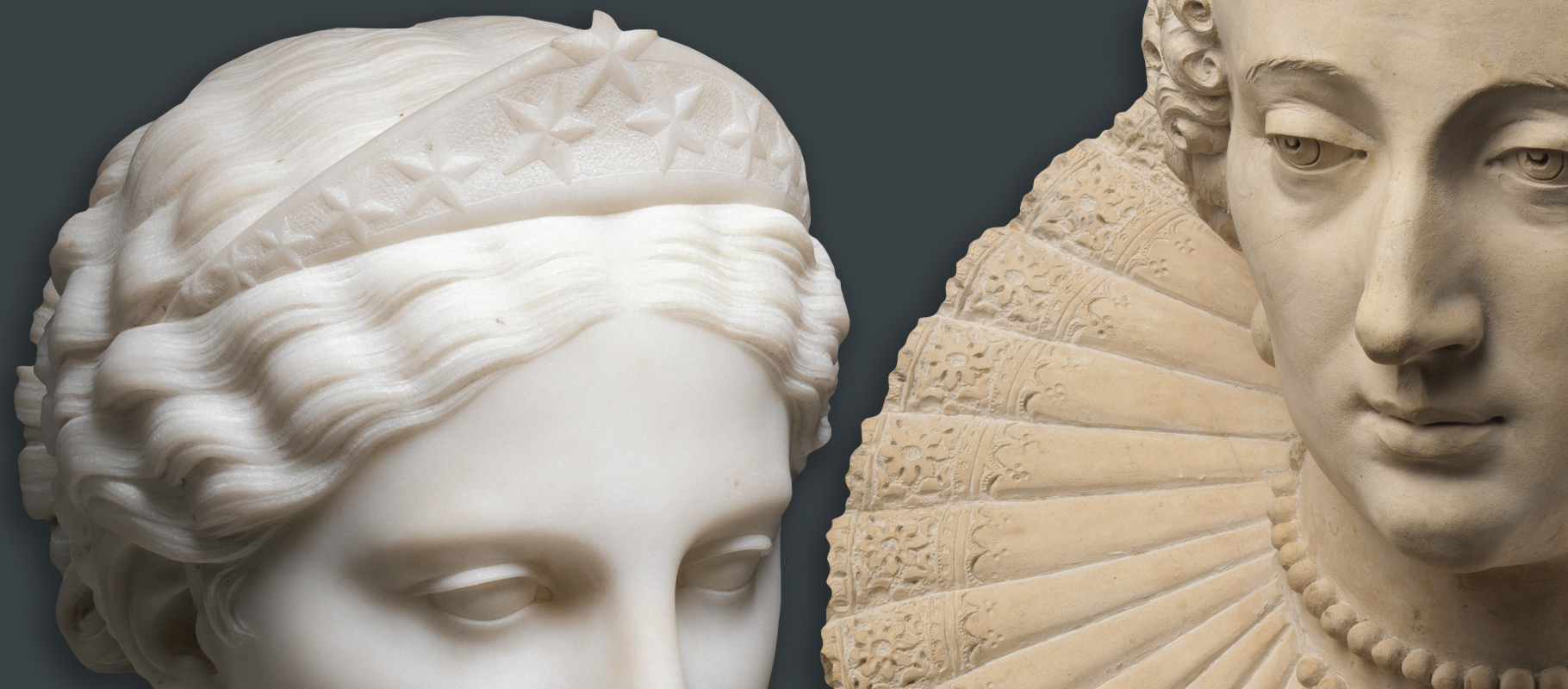 Above: details from ‘America’ by Hiram Powers (1850) and a portrait of Queen Elizabeth I by John Bacon the Elder (1780)
Above: details from ‘America’ by Hiram Powers (1850) and a portrait of Queen Elizabeth I by John Bacon the Elder (1780)




